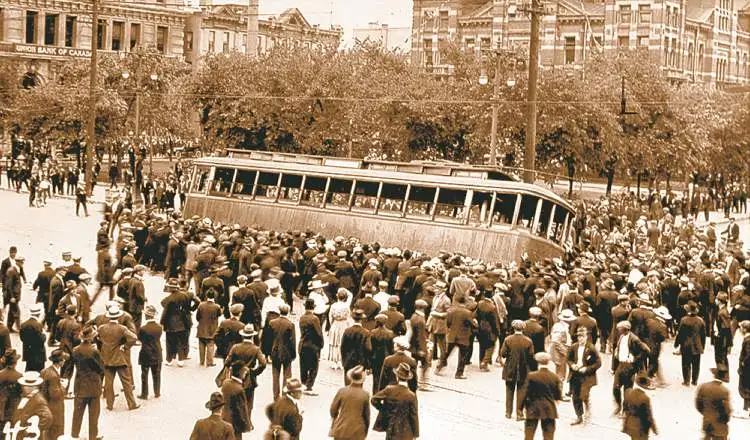C/O frank 15 May, 2024
For six weeks, 15 May to 26 June, 1919, more than 30,000 workers shut down the city of Winnipeg, Manitoba.
Robert Boyd (R. B.) Russell and Peter Herenchuk, Machinist Union activists from Local Lodge 122 were strike leaders. The strike produced the worst repressive measures taken to that time against trade unionists. Arrests and killings eventually ended the strike but moved the labour movement into the field of political action.
The strike started for many reasons, largely because life was difficult due to social disparities and the dire circumstances endured by the city’s working population. Low wages, escalating prices, precarious employment, discrimination against immigrants, substandard housing, and inadequate healthcare marked the struggles of the working class.
Furthermore, there brewed a sense of anger because employers acquired huge profits acquired during WWI and the upheaval it caused. Returning soldiers, scarred by their wartime ordeals, harboured a fervent desire for improved social conditions and opportunities upon their homecoming. Even though most workers didn’t belong to unions, they hoped that joining together could make their lives better.
Early Canadian IAM top leadership came from the railroad industry. James Somerville was Canadian Vice-President from 1908 to 1937. During his tenure, Machinists at Dominion Bridge provided the spark that ignited the Winnipeg General Strike in 1919. He was also from Local Lodge 122.


